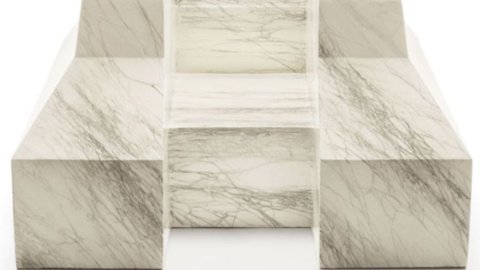The exhibition recounts Gufram's first 50 years through its most symbolic projects which in recent years have revived the legend of the brand and its crazy and counter-current visions.
With a special layout, some of the most representative icons of Gufram's history invade the gallery space: from the Bocca sofa by Studio65 to the Cactus designed by Guido Drocco and Franco Mello, from the Pratone by Giorgio Ceretti, Pietro Derossi and Riccardo Rosso, to the Sasso and Sedilsasso by Piero Gilardi, from the Globe by the duo Studio Job to the Magnolia by Marcel Wanders, and many others.
Charley Vezza, Global Creative Orchestrator of the brand, says: “Gufram was born in Turin in 1966 revolutionizing the domestic landscape and giving life, together with other realities of that period, to what is now known as Italian Radical Design. Without giving weight to the increasingly intense succession of ephemeral fashions and customs, Gufram still continues this path today while remaining true to itself: her icons have become fixed points in the collective imagination, like rocks around which the currents pass. On the occasion of the 50th anniversary of the brand, and right now that Radical Design has been historicized and is experiencing a new moment of splendour, we have decided to visualize this history of resistance with an exhibition in the Galleria Carla Sozzani which has always been a place where ideas against the tide they can express themselves freely. Don't expect a didactic exhibition, what you will see will be the perspective representation of an undisciplined and nonconformist thought".
Inside the gallery, two unpublished projects presented for the first time on the occasion of the exhibition. Armchair by Alessandro Mendini is a totemic and symbolic seat, a domestic throne that thrives on the contrast between the lightness of polyurethane and the faux marble finish. Produced in a single copy in the early 80s and used for a historic cover of Casabella magazine, it is now made in a limited edition in “true-fake” Carrara marble.
The artist Kris Ruhs will preview a soft sculpture in "true-faux" rusty iron, taken from his modular sculptures and become a single block, according to the ironic game of faux-true that distinguishes Gufram creations.
Since the end of the 60s, at a time when Italian society is undergoing profound change, Gufram has been at the center of a movement carried out by artists and architects which will later become radical design as we know it today. Gufram was the first to use polyurethane in furnishing objects, employing its resistance and ductility to create the most unusual and diverse shapes while maintaining its softness, thus creating a tactile and visual short circuit.
The first creative who invents a new way of treating polyurethane by painting it with water-repellent synthetic paint is the artist Piero Gilardi who recalls today: "In the 70s, working on the theme of "integral upholstery" meant for designers to be constrained by the problem of making fabric linings very complex and often impossible to do. At Gufram we were able to free the imagination of designers through Guflac”.
Gilardi's innovative intuition, called Guflac, at the basis of the development of Gufram products, transforms the polyurethane which becomes not only a structure but also an aesthetic component.
Over the years Guflac has been modified, improved, updated but that special natural varnish always remains which, by making the polyurethane skin through skilful craftsmanship, creates those fantastic dreams that are Gufram projects.





